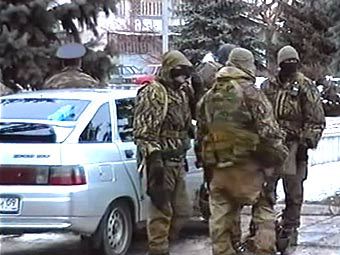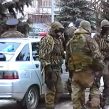
Russian Uprising in Stavropol Region Alarms Russian Authorities
Publication: Eurasia Daily Monitor Volume: 10 Issue: 20
By:

On January 26, police carried out mass arrests in Stavropol region to prevent ethnic Russians from rallying against the North Caucasians, arresting 87 people in the city of Nevinnomyssk. The protesters’ chief slogan was “Stavropol Is Not the Caucasus!” They demanded the introduction of a special migration regime in Stavropol region, its separation from the North Caucasian Federal District and even closing the administrative borders with the republics of the North Caucasus. The unregistered organization Novaya Sila (New Power) led the protests. The authorities’ reaction was harsh, and the protesters were apprehended before reaching the central square of the city where the rally was to have taken place (https://www.kommersant.ru/doc/2114620).
The planned rally in Nevinnomyssk was the first large-scale grassroots protest in southern Russia explicitly demanding that the Russian government separate the ethnic Russian population from the North Caucasus. When the North Caucasian Federal District was created in 2010, Stavropol appeared to be the only region in the district that had a predominantly ethnic Russian population. Since then various activist groups in Stavropol region have campaigned for the region’s separation from the North Caucasian Federal District, but Moscow has invariably rejected these demands. Ethnic Russians in Stavropol region complain that the North Caucasians bring crime with them and are changing the ethnic makeup of the region as ethnic Russians gradually leave and are replaced by North Caucasus natives. Stavropol region is the first stop for North Caucasians as they migrate from their home republics in search of jobs, a chance for a better life, and an escape from instability while remaining close to home.
For the Russian government, the presence of Stavropol region in the North Caucasian Federal District has both symbolic and practical meaning. On the one hand, through Stavropol region, Moscow retains the image of controlling the North Caucasus—for example, Moscow’s envoy to the region, Alexander Khloponin, officially resides in the city of Pyatigorsk, which is located in the southern part of Stavropol region. At the same time, Moscow’s hopes have been that Stavropol could become a melting pot for the North Caucasians. Stavropol region is almost as large as Dagestan with its population of nearly 3 million. Moreover, while Dagestan is the largest region in the North Caucasian Federal District, because it is ethnically fragmented, ethnic Russians in fact still comprise the largest ethnic group throughout all of the federal district. Yet, ethnic Russians increasingly seek insulation from the North Caucasus, and Stavropol region finds itself on the frontline of this movement.
The trouble in Nevinnomyssk started last December 6, when an ethnic Russian resident, Nikolai Naumenko, got into a fistfight with an ethnic Chechen, Viskhan Akaev. Akaev, assisted by his brother, reportedly stabbed Naumenko to death and ran away. Even though Akaev and his brother were declared fugitives and put on the federal wanted list, they were not found. The Russian population of the Stavropol region accused the authorities of inaction and started to organize public protests. On December 22, 37 protesters were arrested, sparking further protests among residents of the city. Even nationalists from Ukraine arrived in Nevinnomyssk to support the uprising (https://www.ng.ru/regions/2013-01-25/6_stavropolie.html). Some Russian activists alleged that up to 400 people were arrested during a protest held on December 22. Police forces from Moscow, Stavropol city and St. Petersburg were reportedly dispatched to prevent the protesters from staging the public rally (https://via-midgard.info/news/srochno-nevinnomyssk-na-osadnom-polozhenii.htm).
It is not surprising that the Russian authorities were aghast as the protest spread among ethnic Russians in Stavropol region. Indeed, while difficult, it is possible for the Russian authorities to cope with separatism of the North Caucasians for the time being. However, it would be impossible for Moscow to withstand serious pressure from ethnic Russian groups and resist Russian separatism. While the authorities have suppressed the Russian protests for now, destabilizing processes are apparently going on under the radar of the mainstream media. A commentator on the website of the newspaper Kommersant alleged that Nevinnomyssk was experiencing “a hunt for vehicles with Chechen license plates. Under the best scenario [locals] refuse to refuel their cars and, in the worst, four vehicles have been burned, [along with] two trucks and two vans” (https://www.kommersant.ru/doc/2114620). Nevinnomyssk is located on the principal highway that connects all the republics of the North Caucasian Federal District to Krasnodar region and the rest of Russia.
Xenophobic attitudes are not an attribute of only ordinary people in Stavropol region. The authorities in the city of Stavropol expelled two Ingush students from the local university after they learned that the non-Russian students performed the traditional Caucasian dance known as the Lezginka in the streets of Stavropol. The students were accused of hooliganism and sent back to their home region, apparently without even an attempt to prosecute them for their “crime” (https://www.kavkaz-uzel.ru/articles/219326/). Although there is no official visa regime between Stavropol region and Ingushetia, in practice such a regime seems to be materializing.
While the Russian government resists popular Russian demands to restrict the inflow of migrants from the North Caucasus and CIS countries, local Russians in Stavropol, including the local authorities, appear to be taking preemptive measures already. So far Moscow has indicated little resolve to address the issue of Russian nationalism, which ultimately drives Russian separatism. Therefore, more such incidents are likely to follow in Stavropol region and elsewhere in Russia.




